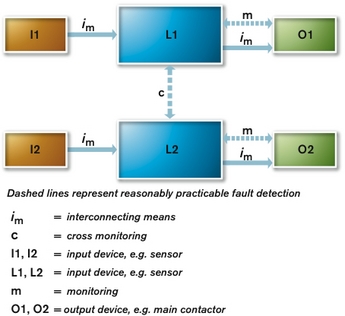Remotes debate rages on
21 November 2007As new competitors join the remote control market, the need to promote the compliance of safety standards is becoming crucial for the sector, says José Ramón Elustondo, remote control product manager, IKUSI.
In this sphere, a product's quality is defined not only by its services but also by the scrupulous compliance of the safety rules set by the European Directives and ensuing standards for this type of product. Only those products that comply with the prescriptions set by the European Union can be classified as quality and truly competitive products.

Radio remote control appliances used for hoisting equipment, and specifically for overhead cranes, must comply with a series of standards, defined by the European Community. There is far-reaching legislation that can be grouped into different types or sub-groups:
1) Legislation applied to telecommunication terminals and equipment (R&TTE) - equipment that includes radios.
- Standards that affect electronic products that incorporate SRD radio devices (short range devices). EN 300 220-3.
2) Electromagnetic compatibility (EMC).
- Specific standards that affect electromagnetic compatibility (EMC) for short range devices (SRD): EN 301 489-3.
- Immunity to radiated disturbances: measurement methods and limits: EN 55022.
- Immunity to conducted disturbances: EN 61000-4-2, EN 610000-4-3, EN 61000-4-4, EN 61000-4-5, EN 61000-4-6, EN 61000-4-11.
- Harmonics in the AC supply network: EN 61000-3-2.
- Voltage surges and flicker in the AC supply network: EN 610000-3-3.0.
3) Standard for Safety of Information Technology Equipment - General Requirements: EN 60950-1.
4) Electronic equipment for use in power installations: EN 50178.
5) Cranes - controls and control stations: EN 13557.
6) Machine safety - Machine electrical equipment: requirements for lifting machinery: EN 60204-1, EN 60204-32.
7) Specification for degrees of protection provided by enclosures (IP code): EN 60529.
Category 3, mandatory in Europe
In addition to complying with all of the above standards, remote controls for lifting equipment have their own specific standard. It is the EN 13557 standard, which states that these remote control devices must be listed in Category 3. This category is developed in the EN-954-1 and EN 13849 standards, which are applicable to overhead cranes, moving hoists and construction tower cranes.
In other words, the legislation that the European Union applies to control systems and control stations for lifting equipment is EN 13557. It is specified in that standard and in its Annex-C (Section C.3.1) that the STOP function, which is defined as the crane safety function (conscious stopping of all the crane's movement by deactivating the main contactor), must comply with Category 3 or a higher category, calling upon the standards EN-954-1 or EN 13849.
What are the characteristics that define Category 3, according to EN-954-1 or EN 13849?
1 The requirement to detect a single failure or breakdown does not mean that all failures or breakdowns will be detected. Therefore, an accumulation of unnoticed failures may lead to an involuntary output or a dangerous situation in the machine. Typical examples of practicable measures to detect failures are the use of feedback or the use of switches with forced guide or mechanically guided contacts, and monitoring of redundant electrical outputs.
2 With the type-C standard, manufacturers need to provide more details to detect failures in case of technology and application needs.
3 The behaviour of a Category 3 system means that:
- When a simple or single failure occurs, the safety function is always executed.
- Some but not all failures will be detected.
- The accumulation of unnoticed failures may lead to the loss of the safety function.
4 The technology used will influence whether or not the failure detection is triggered.
When these legislation considerations are applied, the design of the radio remote control devices must be in line with the following block diagram (see picture extracted from the EN13849 standard).

